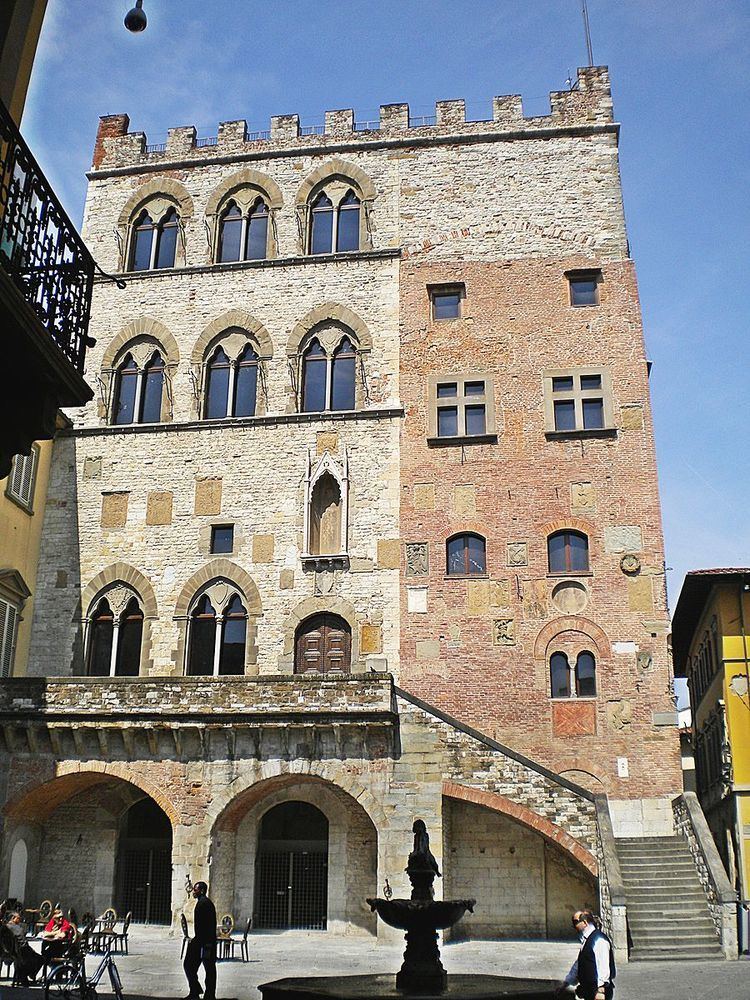Phone +39 0574 193 4996 | ||
 | ||
Hours Closed today TuesdayClosedWednesday10:30AM–6:30PMThursday10:30AM–6:30PMFriday10:30AM–6:30PMSaturday10:30AM–6:30PMSunday10:30AM–6:30PMMonday10:30AM–6:30PMSuggest an edit Similar Castello dell'Imperatore, Santa Maria delle Carceri - P, Prato textile museum, Prato Cathedral, Villa Medicea Profiles | ||
Palazzo pretorio prato tuscany italy europe
The Palazzo Pretorio of the Tuscan town of Prato was the old city hall located town center, standing in front of the current Palazzo Comunale. It now accommodates the Civic Museum of Prato, which was reopened on September 2013.
Contents
History
The main structure in its present form, was assembled during the late 13th century and early 14th century from the merger of three separate buildings, fused to house the local Podestà, the judiciary and Prison. The different building materials, evident from the facade, still allow us to distinguish the outlines of the earlier structures. The oldest part is the tower-house still discernible on the right (13th century), which had belonged to the family of Pipini, with a portico on the ground floor with pilasters of limestone then buffered but still visible. It was purchased in 1284 from the captain of the people of Fresco Frescobaldi to house the municipal government. During the 16th century, the building, including the belltower, collapsed. The restoration added a new bell-tower and crowning crenellations. The interiors were often divided into smaller rooms over time. Towards the end of 19th century, it was proposed for demolition, but by 1909 it was decided to restore the building.
The left hand part of the facace and building dates back to the 14th century and has eight elegant mullioned windows and a tabernacle. In this tarbarnacle, until at least 1799, stood a statue of the 14th century Robert of Anjou, once viewed as a defender of the city. Unfortunately, it was he, who sold Prato to Florence, ending the town's independence. From the portal on the ground floor one enters a series of rooms with original frescoes: the earliest frescoes (1307) by Bettino Corsino and later frescoes (1425) by Pietro and Antonio di Miniato. The wide outdoor staircase leads to the main floor.
The Grand Duke Peter Leopold of Lorraine in 1788 expressed the intention of creating a school of design in Prato. By 1858, a collection of works in Prato were being assembled in a civic museum, housed in the nearby Town Hall. From 1912, in the rooms of the Praetorian Palace has hosted the Museum, which contains many works of art ranging from medieval times to the 19th century.
